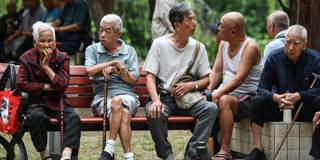As China’s shrinking workforce slows economic growth and reduces government revenues, the rapidly growing elderly population is driving up pension spending. Given the severity of its demographic crisis, China will need to keep raising its retirement age, potentially fueling civil unrest and political instability.
MADISON – On September 13, the Chinese government approved plans to raise the mandatory retirement age from 60 to 63 for men, 55 to 58 for white-collar women, and from 50 to 55 for blue-collar women. These changes, which will be phased in over the next 15 years, aim to mitigate the effects of China’s rapidly aging population and shrinking pension budget. But after two decades of inaction, this long-overdue reform falls far short of what the country needs, merely kicking a political time bomb down the road for future generations to defuse.

MADISON – On September 13, the Chinese government approved plans to raise the mandatory retirement age from 60 to 63 for men, 55 to 58 for white-collar women, and from 50 to 55 for blue-collar women. These changes, which will be phased in over the next 15 years, aim to mitigate the effects of China’s rapidly aging population and shrinking pension budget. But after two decades of inaction, this long-overdue reform falls far short of what the country needs, merely kicking a political time bomb down the road for future generations to defuse.